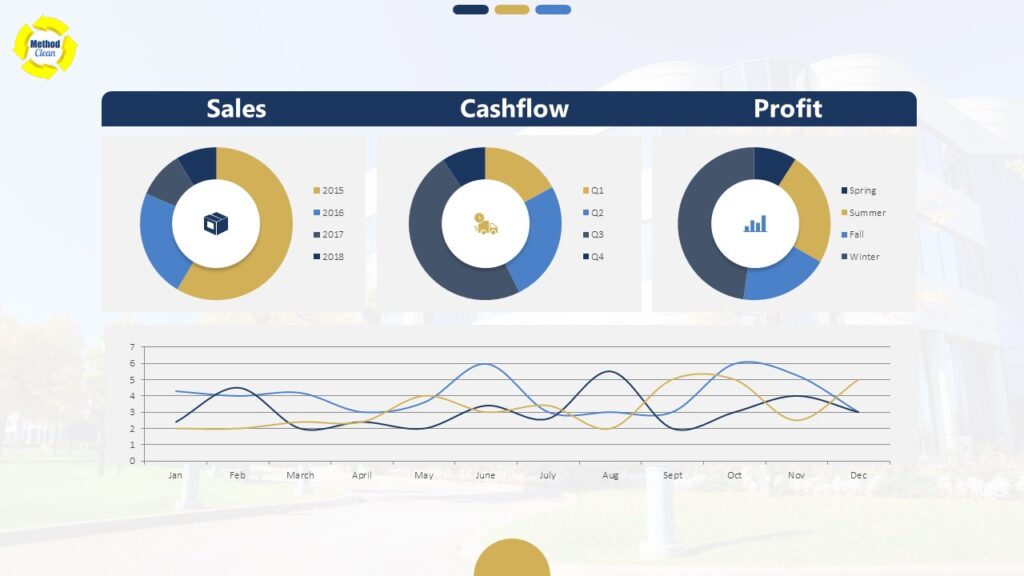The Ultimate Guide to Scaling Your Cleaning Business
In the competitive world of cleaning services, businesses often struggle to decide which services to add or remove from their offerings. With diverse services ranging from carpet cleaning, deep cleaning, marble polishing, floor care, hardwood floors to window washing, making these decisions can be challenging.
A business model scorecard can be a powerful tool to evaluate and prioritize various services based on key criteria. This blog will guide you through creating a comprehensive scorecard, helping you make informed decisions to optimize your service offerings.
What is a Business Model Scorecard?
A business model scorecard is a strategic tool that helps businesses evaluate the viability and potential success of different services. By assessing various factors such as customer acquisition costs, revenue potential, and long-term profitability, you can make data-driven decisions about which services to focus on and which to reconsider.
Top Questions To Ask Before Scaling Up Your Cleaning Business
| Criteria | Description | Service |
|---|---|---|
| Number needed | How many customers are required to make the service viable? | 3 |
| Ease of finding | How easy is it to identify and reach potential customers? | 3 |
| Buying patterns | How predictable and consistent are customer purchasing habits? | 3 |
| $ revenue | What is the revenue potential per customer? | 3 |
| Repeat sales | How likely are customers to make repeat purchases? | 3 |
| Ongoing support | How much ongoing support is required? | 2 |
| How important | How critical is this service to the overall business strategy? | 3 |
| Competitive advantage | How much of a competitive advantage does this service provide? | 3 |
| Price vs Value | How well does the service price align with the value provided to customers? | 3 |
| Entry Cost | What is the cost to acquire a new customer for this service? | 3 |
| Support after sale | How much support is needed after the sale? | 3 |
| Advertising needed | How much advertising is required to promote the service? | 2 |
| Profit margin | What is the profit margin for this service? | 3 |
| Up-sell/Cross-sell | How much potential is there for up-selling and cross-selling? | 3 |
| Ongoing cost | What are the ongoing costs associated with the service? | 3 |
| Entry | What is the initial investment required for this service? | 3 |
| Keep market share | How much investment is needed to maintain market share? | 3 |
| To stay ahead | What level of investment is required to stay ahead of competitors? | 3 |
| Training Cost | What is the cost of training staff for this service? | 3 |
| Total Score | 59 |
Scaling Up Your Cleaning Business with a Scorecard
Scaling a cleaning business requires focusing on services that offer high returns and are scalable. The scorecard allows you to assess each service based on several key factors. Here’s how to create a scorecard tailored for your cleaning business:
Criteria for Evaluating Services
1. Customers
- Number of Customers Needed: Evaluate how many clients are necessary to make a service viable. Services that require fewer customers to reach profitability may be easier to scale.
- Score: 1 (many), 2 (moderate), 3 (few)
- Ease of Finding Customers: Assess how easy it is to find and acquire clients for this service. Services with a clear target market and higher demand score better.
- Score: 1 (difficult), 2 (average), 3 (easy)
- Customer Buying Patterns: Predictable customer behaviors make it easier to scale up.
- Score: 1 (unpredictable), 2 (somewhat predictable), 3 (consistent)
2. Customer Value
- Revenue Per Customer: Services with a high revenue potential per client are more scalable as they offer better profitability.
- Score: 1 (low), 2 (moderate), 3 (high)
- Repeat Sales: High repeat business potential indicates a scalable service.
- Score: 1 (unlikely), 2 (possible), 3 (very likely)
- Ongoing Support: Services that require minimal after-sale support can be scaled more easily.
- Score: 1 (high), 2 (moderate), 3 (low)
3. Sales and Marketing
- Importance to Business Strategy: Assess how critical a service is to your overall business growth. High-impact services should be prioritized for scaling.
- Score: 1 (not important), 2 (important), 3 (very important)
- Competitive Advantage: Services that provide a unique edge over competitors are more scalable.
- Score: 1 (low), 2 (moderate), 3 (high)
- Price vs. Value: How well does the service price align with the perceived value?
- Score: 1 (poor alignment), 2 (average alignment), 3 (excellent alignment)
4. Customer Acquisition Costs
- Entry Cost: Lower customer acquisition costs make it easier to scale services.
- Score: 1 (high), 2 (moderate), 3 (low)
- Advertising Needs: Services requiring less advertising investment are typically easier to scale.
- Score: 1 (high), 2 (moderate), 3 (low)
5. Long-Term Potential
- Profit Margin: Services with higher profit margins are better suited for scaling.
- Score: 1 (low), 2 (moderate), 3 (high)
- Upselling/Cross-selling Potential: Services that allow for easy cross-selling or upselling can provide additional revenue streams as you scale.
- Score: 1 (low), 2 (moderate), 3 (high)
- Ongoing Costs: Lower ongoing costs contribute to easier scalability.
- Score: 1 (high), 2 (moderate), 3 (low)
6. Investment Requirements
- Initial Investment: Consider the upfront cost required to scale the service. Lower investment needs make scaling more feasible.
- Score: 1 (high), 2 (moderate), 3 (low)
- Market Share Retention: The amount of investment needed to maintain market share can influence scalability.
- Score: 1 (high), 2 (moderate), 3 (low)
Before scaling first determine your specific SWOT analysis.
Resources to Help You Scale Your Business
As you develop and implement your business model scorecard, these resources can further support your decision-making process and scaling strategy:
Commercial Cleaning Break-Even Calculator: Use this tool to determine the minimum revenue you need to cover expenses and start profiting from your cleaning services. This is crucial when deciding which services to scale.
Janitorial Bid Calculator: Accurately pricing your services is key to scaling. This calculator helps you estimate bids for new contracts, allowing you to expand with confidence.
Sample Janitorial and Commercial Cleaning Business Plan: Get insights from a sample business plan tailored for cleaning services. This will help guide your own planning efforts as you refine your business model.
Ultimate Janitorial and Commercial Cleaning Training Manual: As you scale, training staff becomes critical. This manual offers comprehensive training resources to ensure consistency in service delivery.
Example of a Winning Marketing Plan for Cleaning Services: A strong marketing strategy is essential for scaling. Learn how to create a plan that drives customer acquisition and service expansion.
Cleaning Service Budget Template: Keeping a tight budget is key to scaling successfully. Use this template to manage your finances efficiently as your business grows.
By incorporating these valuable resources into your scaling strategy, you’ll be better equipped to grow your cleaning business sustainably. From budget management to pricing strategies, these tools will help ensure your scaling efforts are based on solid financial and operational foundations.
Final Thoughts
A Business Model Scorecard is a valuable tool for cleaning services looking to optimize their offerings. By evaluating each service based on key criteria, you can make informed decisions that align with your business goals.
Regularly updating and reviewing your scorecard will help you adapt to changing market conditions and continue to offer services that meet customer needs and drive profitability.
By implementing this systematic approach and utilizing the provided resources, you can ensure that your cleaning business focuses on the most promising and profitable services, setting yourself up for long-term success.
Create a dedicated sales plan first so you can target the right prospects.


